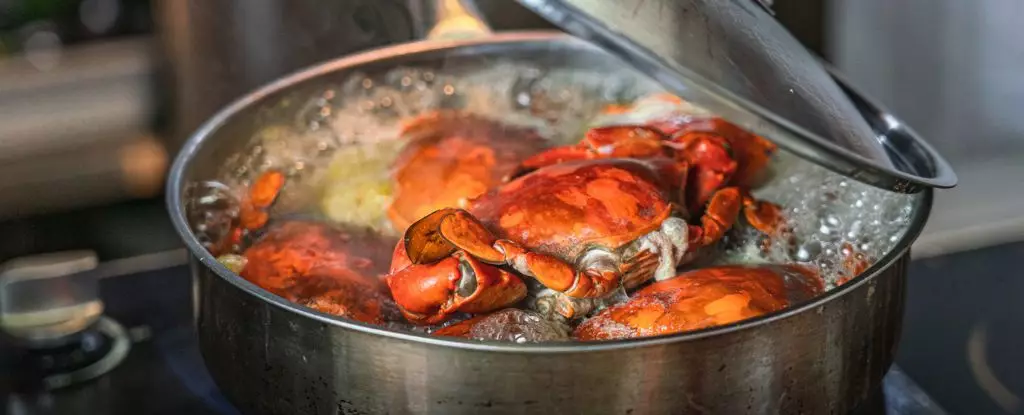While the hard shells of crustaceans like shore crabs (Carcinus maenas) suggest an impervious exterior, emerging research indicates a more complex reality regarding their capacity for sensation and pain. Historically regarded as unfeeling beings, crabs are now found to possess significant capabilities to respond to harmful stimuli, challenging long-standing assumptions. This paradigm shift has profound implications for both the scientific community and practices related to the treatment of these animals, particularly in culinary contexts. The notion that crustaceans can experience pain invites us to reevaluate our practices of boiling and dispatching them for human consumption.
A key advancement in the understanding of crustacean pain perception arises from experiments that scrutinize the neurological underpinnings of these animals. Researchers have begun employing electrophysiological techniques traditionally reserved for higher vertebrates to examine the crabs’ responses to painful stimuli. By utilizing devices akin to electroencephalograms (EEGs), scientists were able to monitor the electrical activity of the crabs’ nervous systems in real time. The results from these studies present compelling evidence that shore crabs can process pain at both a peripheral and central level, a hallmark of consciousness typically found in more evolutionarily advanced species.
During testing, crabs subjected to varying levels of acidic exposure demonstrated a correlation between the stimulus’s acid concentration and the corresponding response in their central nervous system. Notably, the responses were distinct when subjected to mechanical stimuli, marking a significant differentiation in how crabs may process different pain modalities. This newfound understanding of crustacean response mechanisms raises critical questions about the nature of pain itself and how we define it across different animal groups.
Despite this exciting evidence, skepticism remains prevalent among some circles of the scientific community. Critics argue that the responses seen in crustaceans might not necessarily equate to a conscious experience of pain akin to that seen in mammals and birds. They suggest that these responses could be reflexive reactions, akin to those found in simpler life forms, which exhibit avoidance behaviors without the necessity for a conscious pain experience. This debate underscores the broader philosophical and ethical discussions surrounding the treatment of various species, particularly those exploited for food.
One of the central issues in this controversy revolves around the definition of ‘pain’ itself. Can we impose our understanding of pain – as a consciously felt experience – onto crustaceans? Or do they possess a different kind of awareness? These questions compel further inquiry into the nature of pain across diverse species, emphasizing the need for more rigorous research.
The research conducted on shore crabs is not merely an academic exercise. The implications of these findings hold substantial weight for animal welfare. With evidence suggesting that crustaceans are capable of experiencing pain, it becomes crucial to explore humane alternatives for their handling and slaughter. As zoophysiologist Lynne Sneddon argues, acknowledging the capacity of these animals to suffer drives us to seek less painful means of harvesting shellfish.
Furthermore, other researchers and animal welfare advocates may argue for stricter regulations concerning the treatment of all crustaceans based on the neurobiological structures they possess. If we can draw parallels among various species, it might be possible to extend protective measures to a wider array of crustaceans, ensuring they are treated with greater respect and humanity in culinary practices.
In light of the growing evidence surrounding the pain perception of crustaceans, it may be time to shift our perspectives on consumption practices. As consumers become more aware of animal welfare issues, there may be a growing demand for ethically sourced seafood that prioritizes the humane treatment of all marine life. Addressing the concerns raised by these studies could lead to innovative practices in food production that balance humanity’s palate with compassion towards sentient beings.
Ultimately, as science continues to unveil the complexities of crustacean intelligence and sensation, it invites us to reconsider our relationships with these creatures. By integrating this knowledge into our everyday choices, we can foster a more ethical approach to our interactions with the natural world, redefining what it means to coexist with the many forms of life that inhabit our planet.

